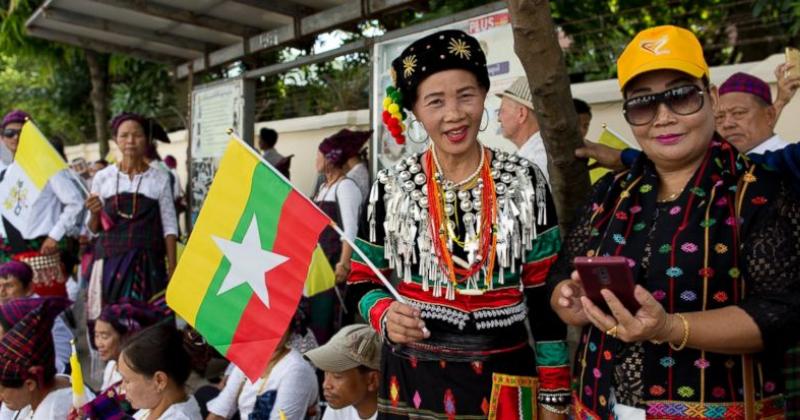The meeting was arranged to take place in Yangon on the morning of November 30. Francis received them in the palace of the archbishopric and talked about their role in the transition process.
It was supposed to be a day of rest, some hours before tomorrow’s tour de force - Tuesday 28 November - with the scheduled institutional meetings and the speech before the political authorities of the country. But Francis accellerated the times and this afternoon in the palace of the Archbishopric of Yangon he met with the Burmese military leaders.
Commander-in-chief of the defense, General Min Aung Hlaing paid an early curtesy visit to his guest. He was accompanied by a small delegation of Lieutenants: General Tun Tun Naung, Than Tun Oo and Soe Htut, all serving at the Bureau of Special Operations. Colonel Aung Zaw Lin, as transcriber, and a translator of the Burmese Catholic Church were also present.
Defence, interior and border control, three key ministries of the Government of Myanmar are in the hands of the military.
The meeting began at 5.55 p.m. and the interview phase lasted fifteen minutes. The Vatican spokesman Greg Burke said, "There was talk about the country's authorities’ great responsibility in this moment of transition".
At the end of what the Vatican authorities have called a "courtesy visit", there was an exchange of gifts: the Pope gave a pontificate medal and the general gave a Burmese harp in the shape of a boat and a decorated rice bowl.
The power of the military, who are responsible for the army’s hard response against the Rohingya, will be even more evident on the next day of the trip, when the Pope and his entourage will move to the new capital of the country, Nay Pyi Taw, built from scratch in a few decades and inhabited by one and a half million people, mostly military officials, personnel employed in ministries and their families.
It is a sort of "forbidden" city for Western journalists cannot enter it. And it was built to be ready for attacks: there are huge ten-lane streets that can be used as landing and take-off runways for military aircraft, its nucleus of political and institutional palaces of power is surrounded by a moat.
